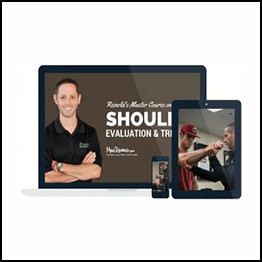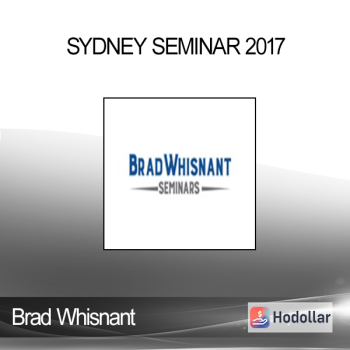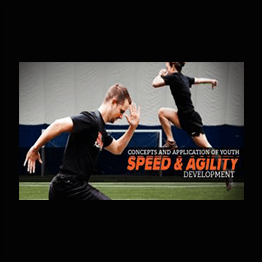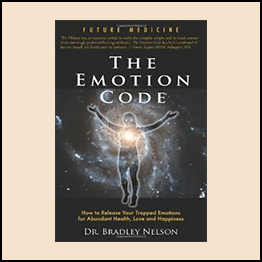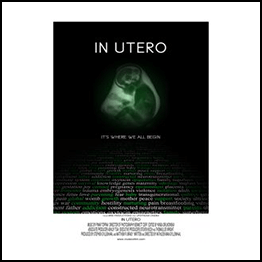Dr. Moshe Feldenkrais – Amherst Training 1980 Transcripts
Dr. Moshe Feldenkrais – Amherst Training 1980 Transcripts
The Feldenkrais Method® is a remarkable approach to human movement, learning and change originally developed by Moshe Feldenkrais. This method is based upon sound principles of physics and neurology. It also considers the conditions in which the nervous system learns the best. Feldenkrais (sometimes called Feldenkrais Therapy) is a well-known method for improving posture, flexibility, coordination and athletic ability. It also helps those with chronic pain or restricted movement (including back pain), as well neurological, developmental and psychological problems. The Feldenkrais Method examines the cultural and biological aspects of movement, posture, and learning. It also considers how our habits can limit our ability to reach our full potential.
We all have patterns of psychological behavior and personal history. These patterns are deep embedded in our nervous systems and can become outmoded, dysfunctional, causing unnecessary physical and psychological limitations. These patterns are deeply embedded in our nervous system, and often become outmoded or dysfunctional, causing unnecessary physical and psychological limitations. Feldenkrais Method relies on organic movement, learning and sensing to break free from your habitual patterns and to allow you to create new patterns in thinking, feeling and moving. Feldenkrais is taught in two complimentary formats: Awareness Through Movement® Functional Integration®Functional Integration (FI)Functional Integration (FI) is a one-To-One approach. Learning, change and improvement are achieved through the use of specific skilled manipulation and passive movements, individualized for the client’s particular needs. Functional Integration is gentle, subtle and effective. It’s widely known for its ability treat both minor and major muscular problems.-Chronic tension, skeletal and neurological issues, as well as developmental problems in children.
Awareness Through Movement (ATM). Students learn structured movement skills by lying down on cotton mats. However, they can also be taught in a variety other positions such as standing or sitting. Each lesson guides you through the fundamental dynamic relationships of a specific pattern of movement and actions using a combination guided attention and pleasant, purposeful movements. Awareness Through Movement, unlike traditional exercise, which can be mechanical and whose goal is to lose calories, stretch and train willpower, teaches you the secrets of reducing muscular effort and improving your awareness of your entire self in action. This sensory learning approach results in more flexibility, pleasure, and less pain. These lessons are simple and can be of great benefit to anyone. The results can also be remarkable.
Dr. Feldenkrais Reutilize this as a tool to help you re-Engage the nervous system in the type of learning that we did as infants but then often abandon. The lessons’ composition creates a conversation between sensing, feeling and moving. This engages the whole system in an organic learning process where old habits can be replaced with new awareness and skill.
Amherst Training 50 DVDs SET Amherst Training Amherst Training The last Professional Training Dr. Feldenkrais This was done during his lifetime. This was the last. Training Dr. Feldenkrais He was a teacher and, true to his nature he approached it in a completely new way. These pages would become the foundation for many of the Trainings.1980 (Year 1)Here’s a list of the most important ingredients and primary ideas in his Method.
Beginning with life’s first movements of the mouth and breath, and following with lessons that mostly follow a developmental progression. There were also lessons that Dr. Feldenkrais These were more structural than they were developmental.
Lessons learned in the first week are rich and varied. It is important to improve your ability to use the eyes in order to make larger movements through space. A number of lessons and series also focus on the importance of the Teleceptors to improving self-quality.-direction. A central motif is the connection between the head & pelvis in different situations or positions. Contrary to the standing position-only the lessons that appear in the AlexanderYanai and Esalen notes. The lessons in Amherst These were more process-oriented. Over several days, a theme with many variations developed. He began to use this interweaving of lessons in San Francisco. Training The predominant mode has now been adopted. In addition to the Awareness Through Movement® material, there are also several talks related to each of the central themes. These were Dr. Feldenkrais Provided to help the group make a decision.-Self-reliance and autonomy. Last week’s talk is provocative and entitled “What is health?”1981 (Year 2)The Amherst Training The third and final group that Dr. Feldenkrais To continue his work. Amherst Year 2 was completed in 1981. This year, Dr. Feldenkrais Donated before his death, 1984.
Dr. Feldenkrais The group was informed in Amherst He believed that his teaching was at a higher level then what he had previously done. He said this on June 11, 1981. “Those who have listened to me last year cannot but admit this year my teaching is more mature, more clear… and, easier to understand, and therefore I am growing with you.”The year begins with the formulation of the “Bell Hand.” The resultant lightness is carried over to more complex actions. “Judo Roll” The “Headstand.” This exercise challenges the student to be fully aware of his/her self, even in new and dynamic spatial orientations. Through rapid alternation in flexion/extension, these two actions can be combined. The segment’s second half is devoted to Dr. Feldenkrais Continue reading “Bridging,” Introduces lessons on developmental themes and concludes the summer with unusual lessons that have an acrobatic flair.
Some of Dr. Feldenkrais’ most stimulating talks. These talks point toward a new way of perceiving and thinking which are to form the necessary foundation for the work in Functional Integration®.AmherstThe Value of Learning Moshe’s teaching.
Jeff Haller, Ph.D. Certified. Feldenkrais Trainer.
It was a pleasure to hear your comments. Amherst Material has been transferred from tape to DVD. That has been something that I have advocated for a long while. It is crucial for practitioners to have their own study materials. Moshe’s teaching through his recorded materials. The hard part is now. How do I study the material? It would be unfair to the materials to do the lessons and then forget them, so that you have something to share. It is necessary to ask deeper questions to understand what was being taught day after day. Amherst. You could, for example, ask: “How does Moshe go about teaching to 220 people, his notion of the potent posture? That it is biologically correct for human beings to be able to move from any one position to another without hesitation or preparation.” How did he manage to get every Hampshire College student to be able move from one position on the floor into another? What was his lesson to get his class to life? “fit for living”. My opinion is that practitioners who transcend conceptualization and intellectually speak about it are called “practicers who go beyond conceptualization”. “potent posture”Practitioners who embody this foundational pillar will be more successful as practitioners.
There are many ways to view the material. You could examine how each lesson was physiologically correct to see how he used force and counter force, force and counterforce, reversibility and even distribution of tonus in each lesson to achieve an effortless efficiency for his students. One could examine the materials to see how he taught the class from the perspective of physics or biology, psychology, mysticism and educational theory. His lectures are a study within an exam and can be used by serious students on their own.
You could explore the inner dynamics of every lesson. MosheYou can either look for the core of the lesson or expand your view to see how the pieces were connected to produce the outcome you desire. It is difficult to get into each lesson and find the gem hidden within. Once one has discovered the gem, one can slowly polish it by reducing effort, finding support on a floor, decreasing unnecessary muscular action and using one’s ability of visualizing action to create simple, effective movement.
There are so few people living in the Feldenkrais® community met Moshe personally. Most practitioners worldwide were trained by a trainer, who gave their interpretation of the information they had heard. Moshe. Perhaps, a second- or third-generation trainer who has never met? MosheThey were trained. Make sure to take the time to compare. Moshe’s teaching with of what you learned and came to believe in your training. Triangulate your learning. Hear from him through the DVD’s and correlate what you heard in your classes with what you hear him say. This will help you be a better teacher and increase your clarity. Master the art of teaching. Feldenkrais Method®, the study of the Amherst Materials will help you along this path. Dr. Moshe Feldenkrais (1904-1984. A short biography Feldenkrais The method was created by Moshe Feldenkrais, D.Sc.,(1904-1984), who synthesised insights from physics and motor development, as well as biotechnology.-To combine mechanics, psychology, martial arts, and psychology into a powerful, practical, and effective application that reconnects learning and human health and function.
Dr. Feldenkrais A distinguished scientist, physicist, engineer. He received his Doctorate of Science from the Sorbonne in Physics and was close to Frederic Joliot Nobel Prize Laureate.-Curie in Paris at the Curie Institute. They did joint research there. He was also a well-respected Judo instructor who wrote many books about the subject. Living in England in the 1940’s, Feldenkrais After sustaining a serious injury, he was unable to walk. He began a long-term exploration of the relationship between bodily movements, healing, feeling, thinking, learning, and other aspects of human behavior. He developed the method that bears his name and was able to regain his walking ability.
In 1984, before he died in Tel-Aviv, Israel, Feldenkrais To continue his work, he personally trained a few practitioners. Today, there are more than 6,000. Feldenkrais The practice is used by practitioners all over the globe. His ideas contributed to the creation of the new field called somatic education. They continue to influence disciplines like psychology, education, child development and physical and occupational therapy.
Here’s what you’ll get in Dr. Moshe Feldenkrais – Amherst Training 1980 Transcripts

Download it immediately Dr. Moshe Feldenkrais – Amherst Training 1980 Transcripts
Shipping method
– After making a purchase, you will see a View your order link to the Downloads page. Here you can download all the files related to your order.
– In case the link is broken for any reason, please contact us and we will resend a new download link.
– If you can’t find the download link, please don’t worry about it. This course is usually available and shipped within one day
– The course you purchased will have lifetime access
– Our support staff is the best by far! Please contact us at email: [email protected] and we will be happy to help!


